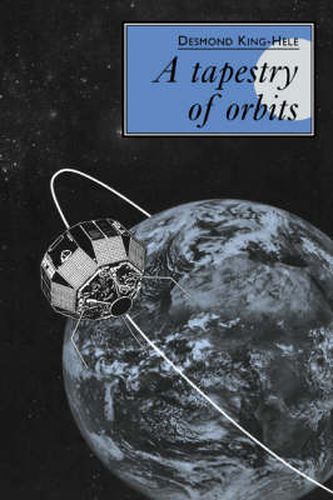Readings Newsletter
Become a Readings Member to make your shopping experience even easier.
Sign in or sign up for free!
You’re not far away from qualifying for FREE standard shipping within Australia
You’ve qualified for FREE standard shipping within Australia
The cart is loading…






Satellites as they cross the night sky look like moving stars, which can be accurately tracked by an observer with binoculars as well as by giant radars and large cameras. These observations help to determine the satellite’s orbit, which is sensitive to the drag of the upper atmosphere and to any irregularities in the gravity field of the Earth. Analysis of the orbit can be used to evaluate the density of the upper atmosphere and to define the shape of the Earth. Desmond King-Hele was the pioneer of this technique of orbit analysis, and this book tells us how the research began, before the launch of putnik in 1957. For thirty years King-Hele and his colleagues at the Royal Aircraft Establishment, Farnborough, developed and applied the technique to reveal much about the Earth and air at a very modest cost. In the 1960s the upper-atmosphere density was thoroughly mapped out for 100 to 2000 km, revealing immense variation of density with solar activity and between day and night. In the 1970s and 1980s a picture of the upper-atmosphere winds emerged, and the profile of the pear-shaped Earth was accurately charted. The number of satellites now orbiting the earth is over 5000. This book is the story of how this inexpensive research of their orbits developed to yield a rich harvest of knowledge about the Earth and its atmosphere, in a scientific narrative that is enlivened with many personal experiences.
$9.00 standard shipping within Australia
FREE standard shipping within Australia for orders over $100.00
Express & International shipping calculated at checkout
Satellites as they cross the night sky look like moving stars, which can be accurately tracked by an observer with binoculars as well as by giant radars and large cameras. These observations help to determine the satellite’s orbit, which is sensitive to the drag of the upper atmosphere and to any irregularities in the gravity field of the Earth. Analysis of the orbit can be used to evaluate the density of the upper atmosphere and to define the shape of the Earth. Desmond King-Hele was the pioneer of this technique of orbit analysis, and this book tells us how the research began, before the launch of putnik in 1957. For thirty years King-Hele and his colleagues at the Royal Aircraft Establishment, Farnborough, developed and applied the technique to reveal much about the Earth and air at a very modest cost. In the 1960s the upper-atmosphere density was thoroughly mapped out for 100 to 2000 km, revealing immense variation of density with solar activity and between day and night. In the 1970s and 1980s a picture of the upper-atmosphere winds emerged, and the profile of the pear-shaped Earth was accurately charted. The number of satellites now orbiting the earth is over 5000. This book is the story of how this inexpensive research of their orbits developed to yield a rich harvest of knowledge about the Earth and its atmosphere, in a scientific narrative that is enlivened with many personal experiences.